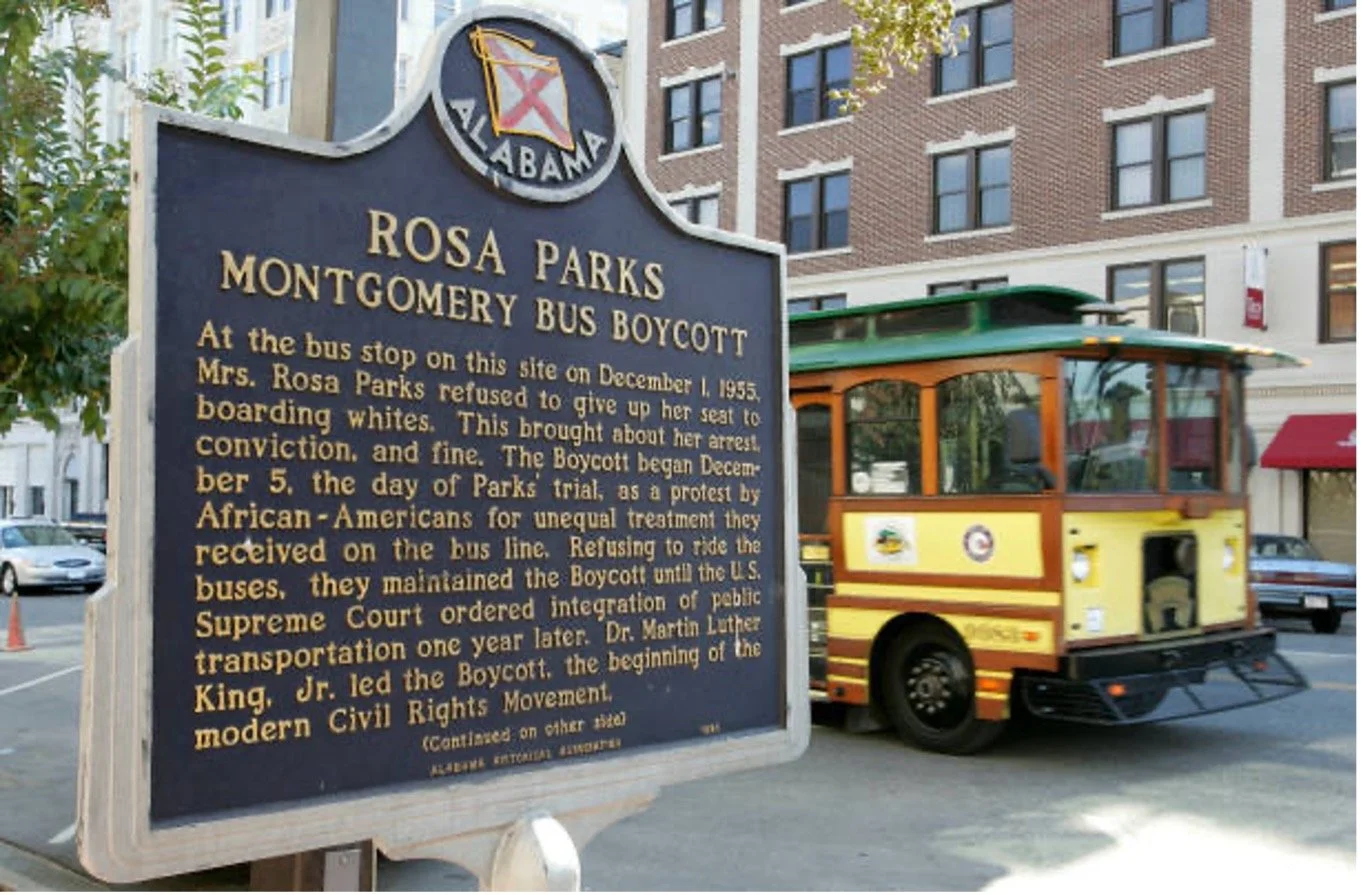Freedom Rides Museum and Historic Greyhound Bus Station
Montgomery, Alabama
Tells the Story of the Freedom Riders.
On May 20, 1961, an integrated group of 21 young college students from Nashville arrived at the historic Montgomery Greyhound Bus Station. These Freedom Riders met mob violence with non-violence and courage. Local police ignored the violence and ambulances refused to take the injured to the hospital, helped only by courageous local Black people. Later abandoned as a bus station, it was saved from demolition and in 2011 opened as a museum.
Down the block from the Freedom Rides Museum is the First Baptist Church which served as a safe haven for Freedom Riders during the spring of 1961. On May 21, the packed building was attacked by 3,000 angry whites who wanted to burn it to the ground. Bricks and tear gas were thrown through windows, prompting Dr. King to call Attorney General Robert Kennedy to have the National Guard safely escort everyone from the church after having spent the night there.
Around the corner at Troy University is Rosa Parks Museum which interpret the events and accomplishments of individuals associated with Montgomery Bus Boycott. The Museum is located at the exact spot where Rosa Parks was arrested after she refused to give up her seat to a white person.
Down the street is Court Square. It was here on the evening of December 1, 1955, Rosa Parks boarded the Cleveland Avenue Bus. The first four rows of the city's buses were reserved for whites, the rear for “coloreds.” After a long day of work at the Montgomery Fair department store, Parks sat in the front of the bus. Parks was no stranger to trouble on the city buses. In 1943, she had been left standing in the rain after an impatient driver left without her.
Now, 12 years later, here was that same driver – James L. Blake – demanding that she and three other Black passengers move to the back of the bus to make room for white passengers. Parks wouldn't budge. Her decision, an act of civil disobedience, led to her arrest. This moment triggered the Montgomery Bus Boycott, which began the same day as her trial.
The bus stop where Parks waited on that day in December can be found inside the Court Square Historic District. A historic marker with a message paying homage to Parks sits in front of the Central Bank Building, the exact spot where she helped set progress into motion.

